X12 Tool Steel
X12 tool steel is a high-carbon, high-chromium cold work tool steel designed for applications requiring superior wear resistance and dimensional stability. 2.0-2.2% carbon and 11.5-13.5% chromium are perfectly balanced to form an optimised carbide structure, which contributes directly to longer tool life and shorter maintenance intervals.
The unique metallurgical structure of X12 provides advantages in hardening response and microstructural stability. When properly heat-treated, it provides uniform hardness with minimal dimensional variation, helping manufacturers maintain tight tolerances in precision tooling applications.
For manufacturers facing premature tool wear, inconsistent performance, or frequent tool replacement, X12 delivers quantifiable benefits: up to 30% reduction in tooling costs, longer maintenance intervals, and increased product quality consistency throughout the tool’s life cycle.
X12 Tool Steel Product Introduction
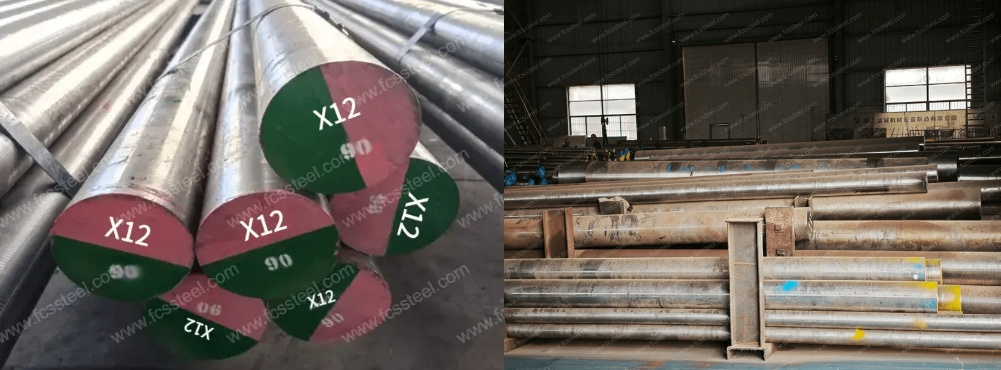
X12 Tool Steel is a high-carbon, high-chromium Rheinland cold work tool steel with an optimised carbon-chromium ratio as the core of its chemical composition, and the addition of molybdenum, vanadium, and trace amounts of titanium and niobium to refine the carbide distribution and improve wear resistance and thermal stability. The corresponding American standard ASTM is D3, and the German standard DIN/W-Nr is X210Cr12/1.2080. The steel adopts the electric furnace melting and vacuum degassing refining process, which significantly reduces the content of impurities and improves the cleanliness, and improves the hot working performance and impact toughness by adjusting the content of carbon and chromium, overcoming the brittleness problem of the traditional high-carbon and high-chromium steel.
X12 tool steel's delivered hardness ≤255 HBS, to ensure good cutting and machinability; after quenching (temperature 950-1050 ℃) and tempering (180-575 ℃), the hardness can be up to 60-62 HRC, both high hardenability, compressive strength and micro-deformation characteristics, wear resistance of ordinary high-carbon high chromium steel. Deformation characteristics, wear resistance of ordinary low alloy tool steel 3-4 times, softening temperature of 520 ℃. The metallographic structure is dominated by fine-grained pearlite and homogeneous carbides, with well-balanced comprehensive performance, suitable for the manufacture of high-load precision tools.
X12 Tool Steel Types and Options

The table below shows the size range, surface condition and tolerance details for X12 Mould Steel:

X12 Tool Steel Customized Options
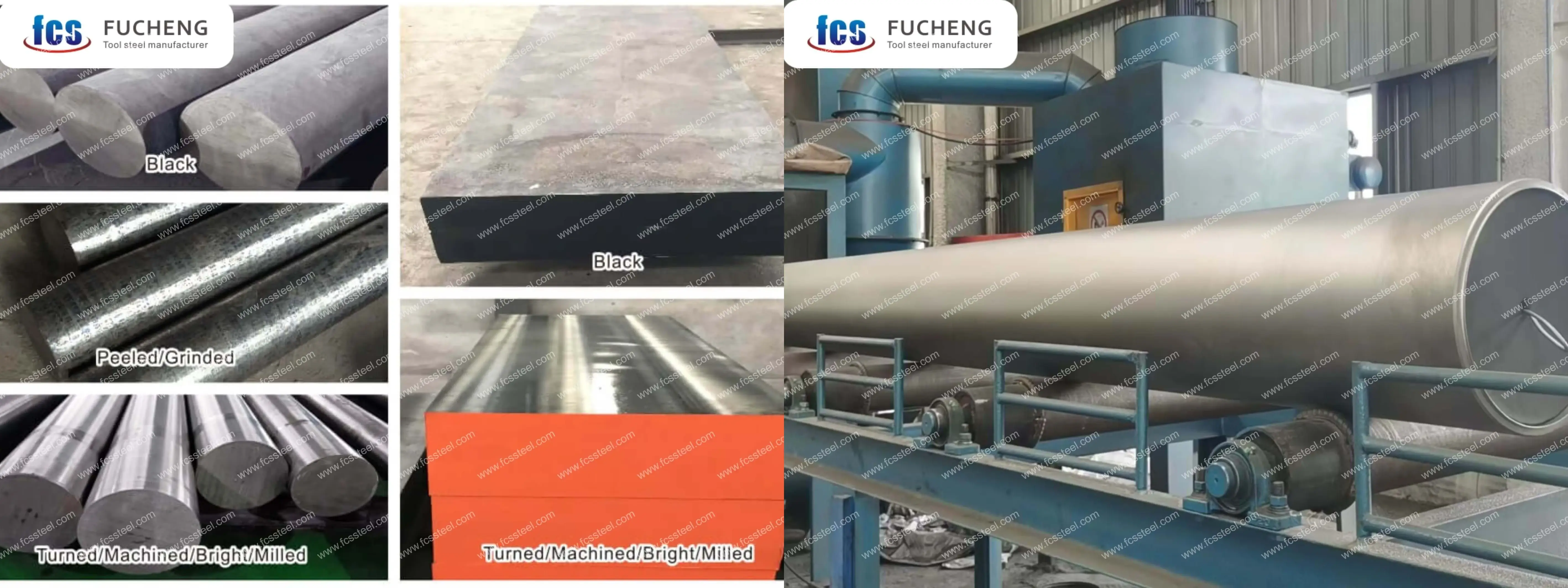
- Customized chemical composition: GB, DIN, ASTM, JIS and other standard grades can be produced. Chemical composition can be customized individually.
- Customized specifications: round steel (diameter), plate (thickness, width) can be customized production.
- Specialized packaging for long term storage or extreme transportation conditions: includes spraying black paint all around, wrapping plastic film, spraying anti-rust oil, and shipping in wooden crates.
- Customized production based on samples or technical agreements.
- X12 Tool Steel Electroslag Remelting (ESR): premium option with higher purity and isotropic properties for critical applications.
X12 Tool Steel Chemical Composition
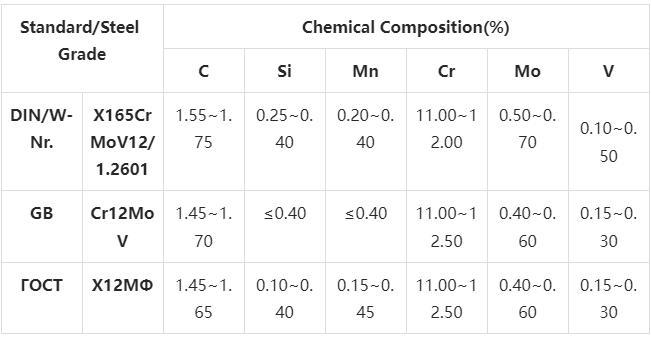
X12 Tool Steel Heat Treatment Process
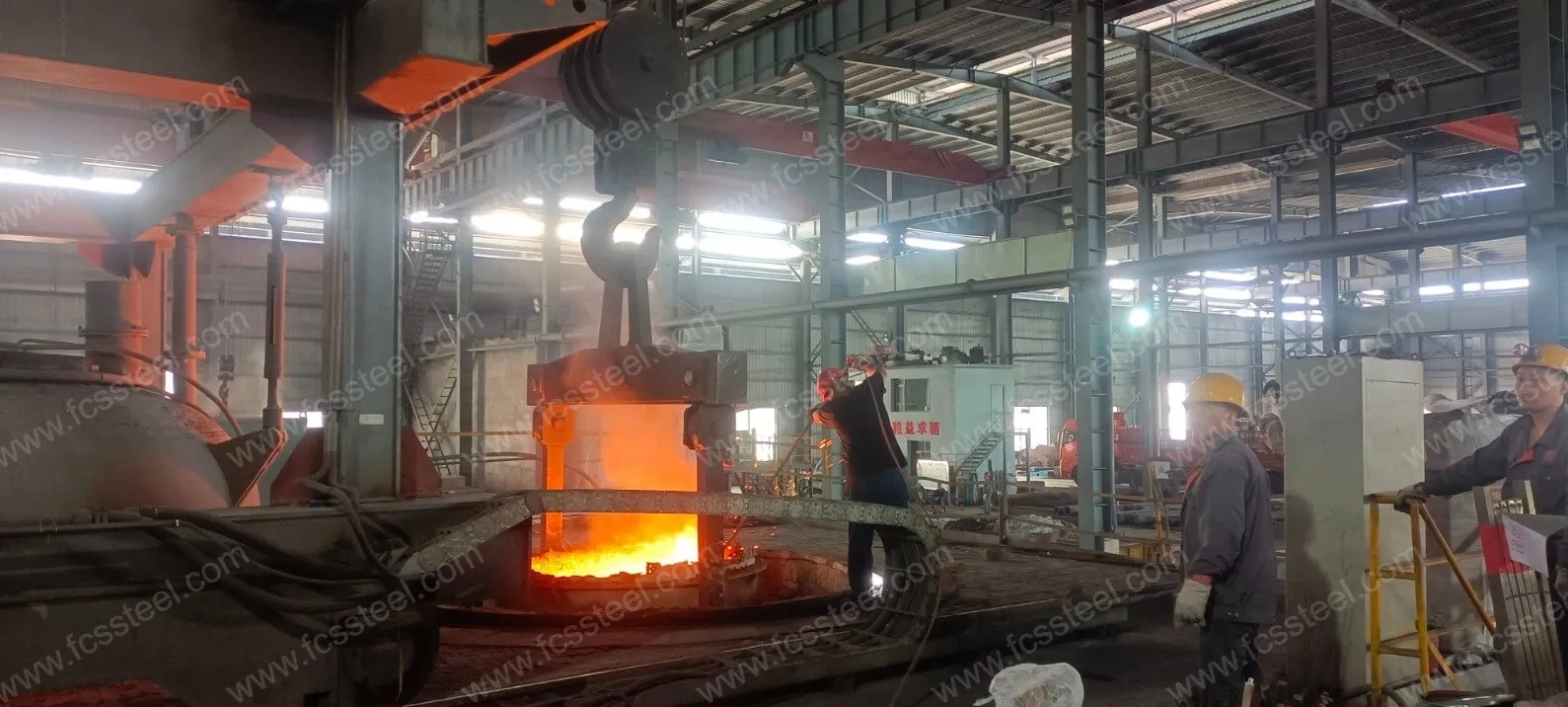
1.Annealing
Purpose: to eliminate internal stresses generated during forging or rolling, reduce hardness, improve cutting performance, and prepare for subsequent processing and heat treatment.
Process parameters:
Heating temperature: 800-850 ℃, holding time 2-4 hours, with the furnace cooling to below 500 ℃, and then air-cooled.
2.Quenching
Purpose: to make the tool steel to obtain martensitic organization, improve hardness and wear resistance.
Process parameters:
Heating temperature: 1000-1050 ℃ (commonly used 1020-1040 ℃), holding time according to the size of the workpiece to determine, generally 30-60 minutes.
Cooling: oil cooling or air cooling (for small size or simple shape of the workpiece), large workpieces can be graded quenching (in the 260-300 ℃ salt bath cooling for a period of time and then air-cooled), in order to reduce the quenching stress, to prevent deformation and cracking.
3.Tempering
Purpose: to eliminate quenching stress, adjust the hardness and toughness, stable organization and size.
Process parameters:
low-temperature tempering: 150-250 ℃, insulation 2-3 hours, air-cooled, tempered hardness of 58-62HRC, for molds requiring high hardness and wear resistance.
Medium temperature tempering: 300-500 ℃, insulation 2-3 hours, air-cooled, tempered hardness of 50-58HRC, can improve the toughness, suitable for molds subject to impact load.
High-temperature tempering: 500 ℃ or more, insulation 2-3 hours, air-cooled, tempered hardness 45-50HRC, mainly for the need for higher toughness of the occasion.
4.Precautions
Heating process should control the rate of heating to avoid too rapid a rise in temperature leading to workpiece surface oxidation and decarburization. Protective atmosphere heating can be used or placed in the furnace charcoal and other anti-decarburization agent.
When quenching and cooling, choose the appropriate cooling medium and cooling method according to the shape and size of the workpiece to ensure the quenching effect while reducing the risk of deformation and cracking.
Tempering must be sufficient to ensure the elimination of internal stresses to avoid mold failure due to stress release during use. For large molds or workpieces with complex shapes, multiple tempering can be used.
X12 Tool Steel Quality Inspection
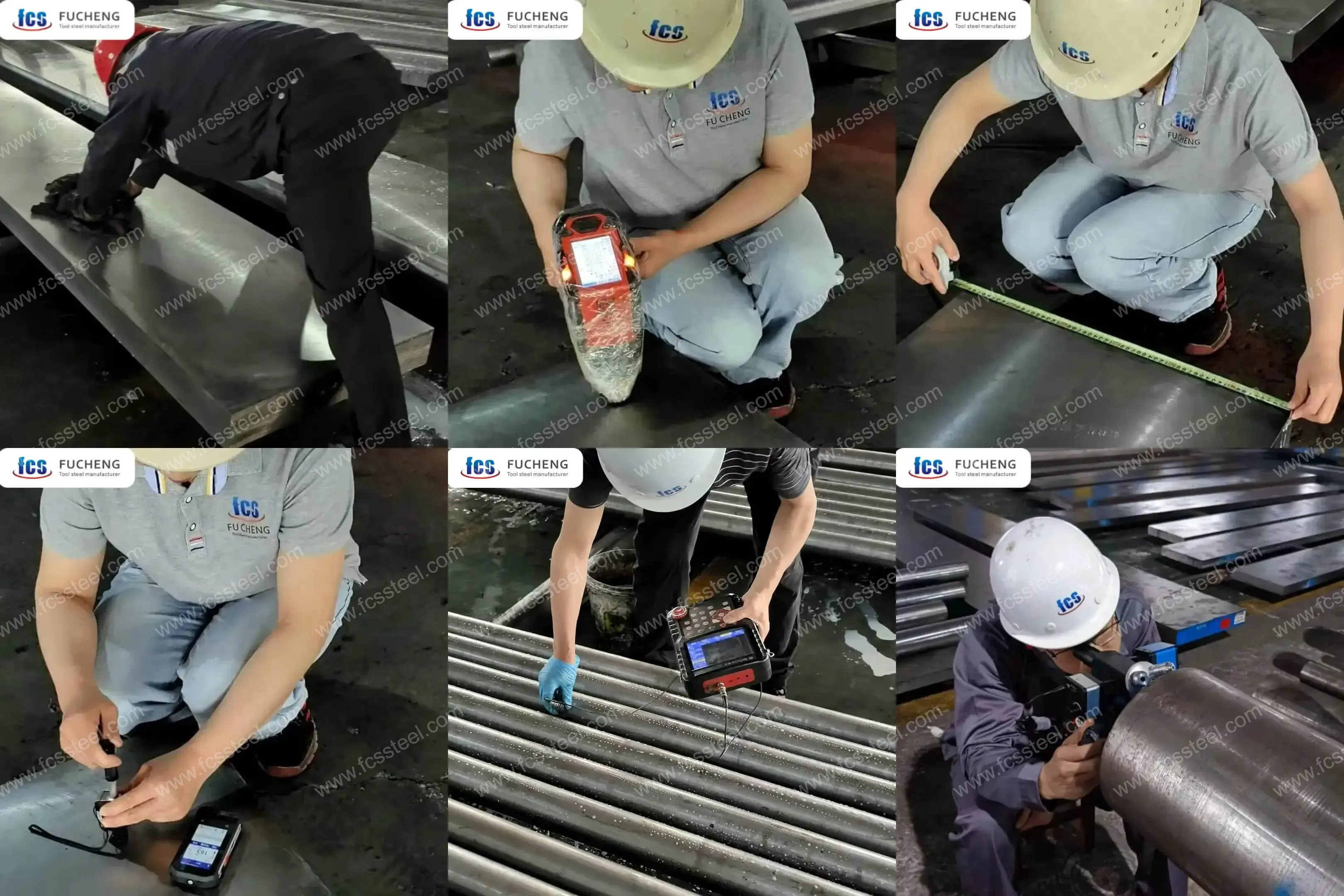
1.Surface Condition Inspection
FCS factory has a very strict quality inspection team, we will carefully check the surface condition of each piece of tool steel to ensure that the steel surface is free from cracks, folds, knots, oxidized skin, pitting, scratches and other defects.
2.Chemical Composition Testing
To verify whether the content of alloying elements meets the standard requirements and to safeguard the basis of the mechanical properties of the material. We will let the staff use full-spectrum direct reading spectrometer to analyze multiple elements at the same time. Sampling needs to remove the surface oxidation layer, using a block specimen to stimulate the test.
3.Dimension and Tolerance Inspection
FCS factory will use professional measuring tools to inspect the dimensions and tolerances of the steel to ensure compliance with the customer's contract requirements. Corresponding gauges will be selected according to the dimensional accuracy requirements, including tape measure, high-precision vernier calipers (0.02mm), micrometers (0.001mm), and special inspection gauges. Inspection items cover: diameter, thickness, width, length, hole diameter, chamfering dimensions, etc., to ensure that the tolerances and dimensions meet the contract requirements.
4.Hardness test
Our FCS factory will use professional hardness tester to test the hardness of steel to ensure that it meets the customer's contract requirements.
5.Ultrasonic Testing
Ultrasonic Testing Standard (UT Test Standard) is: Sep 1921-84 Class3 D/d,E/e.
FCS factory uses ultrasonic testing equipment to detect macro defects inside the material (such as cracks, shrinkage holes, inclusions, white spots, etc.), and every piece of round steel and plate will be examined by a second flaw detection test before shipment to ensure that the quality is qualified before shipment.
6.Microstructure Inspection
(1) Metallographic Analysis
FCS factory will use metallographic analysis instrument to detect the microstructure state after heat treatment, including carbide distribution, martensite morphology, residual austenite content, etc.
(2) Grain size rating
FCS factory will use the comparative method to determine the austenite grain size by comparing the microstructure of the specimen with the standard rating chart, to ensure that it meets the customer's requirements.
X12 Tool Steel Technical Specifications
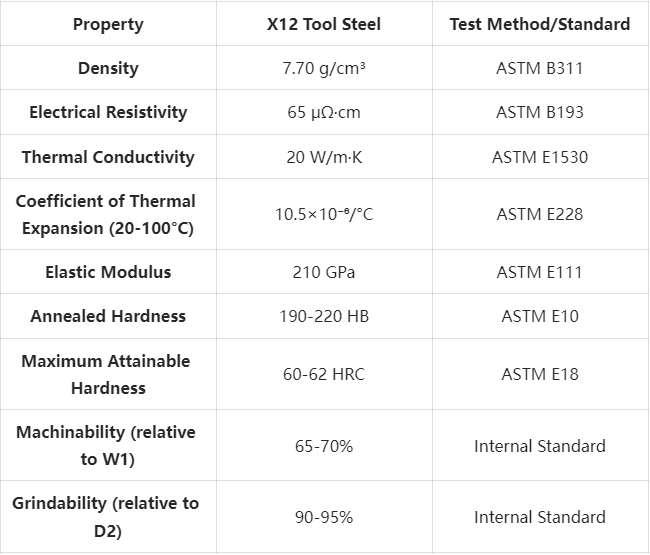
X12 Tool Steel Product Applications

High-performance cutting tools
For industrial cutting tools that cut abrasive materials, X12 balances hardness and toughness. When used in paper and textile cutting blades, it maintains its sharpness three times longer than conventional tool steel. A packaging equipment manufacturer uses X12 for rotary cutting blades, extending replacement intervals from monthly to quarterly, dramatically reducing downtime and maintenance costs.
Precision Gauging Equipment
X12's dimensional stability makes it ideal for precision gauging. Material wear resistance and dimensional retention ensure measurement accuracy throughout the life of the gauge. One precision instrument manufacturer reported a 30% increase in gauge calibration intervals after switching to X12.
High Stress Forming Rolls
In cold rolling applications, where surface quality and performance stability are critical, X12 rolls excel. The combination of abrasion resistance and compressive strength supports stable forming over long cycles. A sheet metal processing company uses X12 rolls for critical forming lines, improving surface quality and reducing roll changes by 45%.
Plastic mould components
For injection moulds processing abrasive or reinforced polymers, X12 components offer longer life and consistent performance. The material can be polished to a high finish and remains unchanged in abrasive environments, making it suitable for exterior parts. A medical device manufacturer uses X12 for high-precision mould cores, resulting in improved part consistency and a 50% reduction in polishing maintenance.
X12 Tool Steel Competitive Advantage Comparison
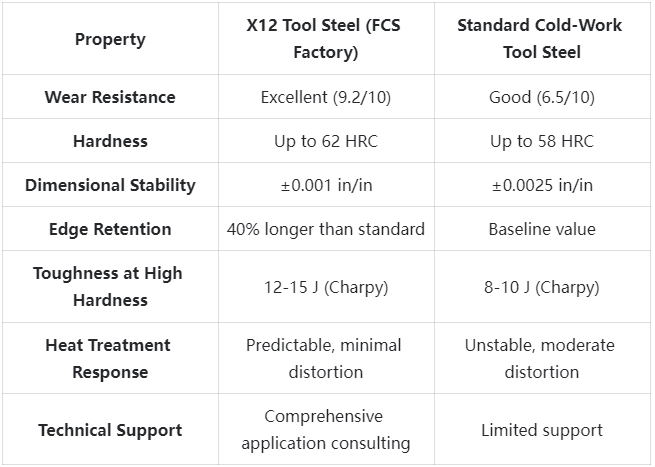
X12 Tool Steel Customer Success Stories
Skip the middleman link, source factory purchasing, reduce purchasing cost and improve market competitiveness.
X12 Tool Steel Pricing Structure Information
Serving the world, whole cabinet sales, factory wholesale price.
X12 Tool Steel Frequently Asked Questions
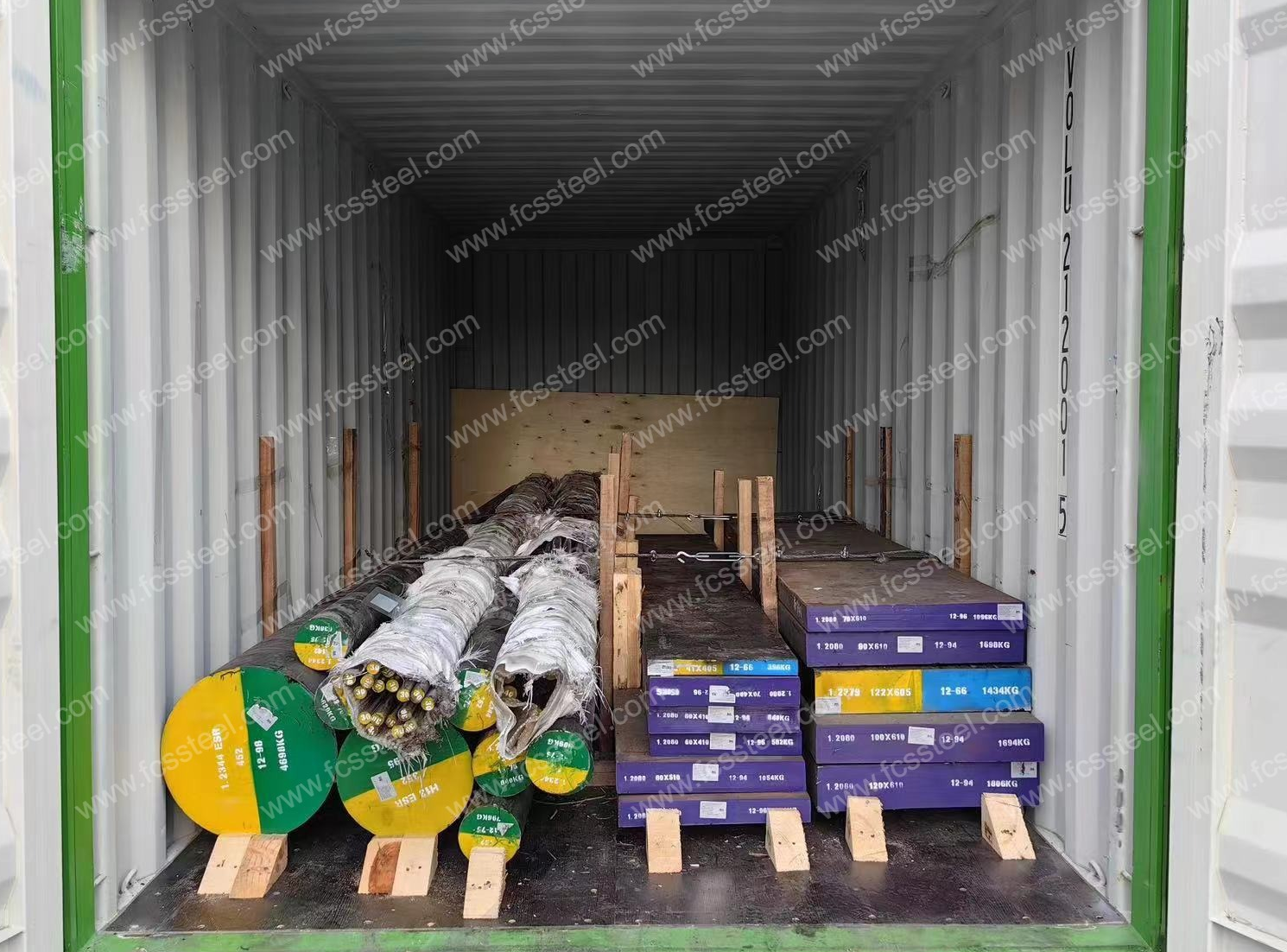
Q:How does X12 compare with D2 and A2 in terms of wear resistance?
A:In standardised abrasion tests, X12 is 35-50% higher than D2 and 60-75% higher than A2, mainly due to the optimised carbide structure, which significantly extends life in most wear applications.Q:Can X12 be machined in the hardened condition?
A:Best machined in the annealed condition, hardened condition can be EDM'd, ground, wire cut, limited milling/drilling with carbide/ceramic tools.Q:Is the corrosion resistance of X12 better than conventional tool steels?
A:Yes, the high chromium content of 11-13% gives it significantly better corrosion resistance than most cold work steels, 200% better than D2 in salt spray testing, and is suitable for corrosive environments.Q: Is X12 suitable for plastic injection moulds?
A: Very suitable, especially for processing abrasive/glass fibre materials.
Additional information
| Weight | 45 kg |
|---|---|
| Dimensions | 165 × 60 × 25 cm |











-1-300x300.png)
